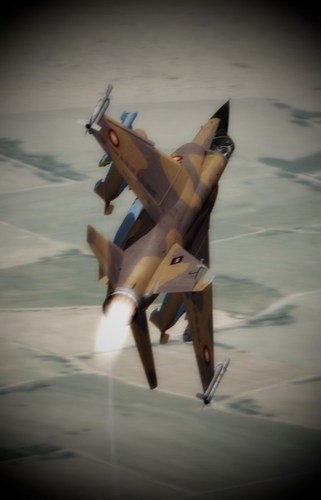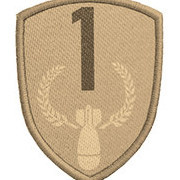Leaderboard
Popular Content
Showing most liked content on 10/31/2018 in File Reviews
-
1 pointPLEASE IRAQUI MIRAGE F-1 SERIES Iraq During the late 1970s, Iraq placed an order for a variant of the Mirage F1, designated as the Mirage F1EQ, which were specially modified for extended range to perform strike missions and were dissimilar to any of the models operated by the French Air Force. During this period, France was a major supplier of military equipment to the nation; in 1983, the former loaned several Dassault-Breguet Super Étendard to Iraq while the latter was awaiting the delivery of the Mirage F1EQ, which experienced a protracted development period and thus the delay of deliveries. The Super Étendard had been strongly advocated for by Dassault, who had feared the potential cancellation of the sizable Mirage F1 order by Iraq if the request was not granted. In 1982, it was agreed to reconfigure several of the under-order Iraqi Mirages F1s from a general combat configuration into a dedicated ground attack platform, adopting Thomson-CSF-built sophisticated electronic warfare equipment and a vastly-increased payload capacity, which included the newly developed AS-30air-to-surface missile. In this role, the Mirage F1 was used to replace Iraq's aging fleet of Hawker Hunters. In September 1985, an agreement was signed between Dassault and Iraq for the delivery of a further 24 aircraft. During the Iran–Iraq War, Iraq's Mirage F1EQs were used intensively for interception, ground attack and anti-shipping missions.[45] The Mirage F1EQ allowed for Iraqi strikes to be conducted over a greater combat radius into Iran than had been previously possible.[46] In November 1981, an Iraqi Mirage F1 accounted for the first Iranian F-14 Tomcat to be shot down, followed by several more in the following months, giving the previously timid Iraqi Air Force new confidence in air-to-air combat engagements with the Iranians.[47] According to research by journalist Tom Cooper, during the war 33 Iraqi Mirage F1s were shot down by Iranian F-14s[48] and two were downed by Iranian F-4 Phantom II units.[49] Iraqi F1EQs claimed at least 35 Iranian aircraft, mostly F-4s and Northrop F-5E Tiger IIs, but also several F-14 Tomcats. On 14 September 1983, a pair of Turkish Air Force F-100F Super Sabre fighter jets of 182 Filo “Atmaca” penetrated Iraqi airspace. A Mirage F-1EQ of the Iraqi Air Force intercepted the flight and fired a Super 530F-1 missile at them. One of the Turkish fighter jets (s/n 56-3903) was shot down and crashed in Zakhovalley near the Turkish-Iraqi border. The plane's pilots reportedly survived the crash and were returned to Turkey. The incident was not made public by either side, although some details surfaced in later years. The incident was revealed in 2012 by Turkish Defence Minister İsmet Yılmaz, in response to a parliamentary question by Republican People’s Party (CHP) MP Metin Lütfi Baydar in the aftermath of the downing of a Turkish F-4 Phantom II in Syria, in 2012. On 17 May 1987, an Iraqi Mirage F1 fired a pair of Exocet missiles at the United States Navy (USN) warship USS Stark as it patrolled the Persian Gulf, causing extensive damage to the ship and killing 37 members of Stark's crew. The exact motive and orders of the pilot remain unclear, although Iraq later apologized for the attack, referring to the incident as "a mistake" and blaming Iran. Prior to the outbreak of the 1991 Gulf War, Iraqi's Mirage F1EQ fleet was the second most numerous type operated by the Iraqi Air Force (the most numerous being the MiG-21). On 17 January 1991, during the opening minutes of the conflict, an unarmed, United States Air Force (USAF) EF-111, crewed by Captain James A. Denton and Captain Brent D. Brandon scored a kill against an Iraqi Mirage F1EQ, which they managed to maneuver into the ground, making it the only F-111 to achieve an aerial victory over another aircraft.Later in the war, an Iraqi Mirage piloted by Capt. Nafie Al-Jubouri successfully downed an American EF-111 Raven through aerial maneuvering as it crashed while attempting to avoid a missile fired by Al-Jubouri. Coalition forces shot down several Iraqi F1s during the Gulf War, such as six F1EQs that were shot down by USAF F-15 Eagles. A pair of F1EQs, which were preparing to carry out a Beluga cluster bomb attack on Saudi oil facilities were shot down by a Royal Saudi Air Force (RSAF) F-15C. Of a pre-conflict force of 88 Mirage F1EQs, 23 were destroyed in the war, a further six were damaged, 24 were flown to Iran and interned; only 23 aircraft remained in service by the end of the Gulf War. Of the 23 destroyed Iraqi Mirage F1EQs, 9 were claimed to have been destroyed in aerial combat. Mirage F1EQ : Export version of the Mirage F1E for Iraq. 16 built. Mirage F1EQ-2 : Single-seat air defence fighter version for Iraq. 16 built. Mirage F1EQ-4 : Single-seat multi-role fighter, ground-attack, reconnaissance version for Iraq. 28 built. Mirage F1EQ-5 : Single-seat anti-shipping version for Iraq. 20 built. Mirage F1EQ-6 : Single-seat anti-shipping version for Iraq. 30 built. Iraqi Air Force received 106 F1EQ & 15 F1BQ between 31 January 1981 and 1989, with a further 4 EQs and 4 trainers undelivered due to Iraq's inability to pay and the UN arms embargo imposed following the 1990 invasion of Kuwait. In early 2011, the French government offered to update and refurbish 18 French-held F1 Mirages and sell these to the Iraqi Air Force Mirage F1E
Important Information
By using this site, you agree to our Terms of Use, Privacy Policy, and We have placed cookies on your device to help make this website better. You can adjust your cookie settings, otherwise we'll assume you're okay to continue..










